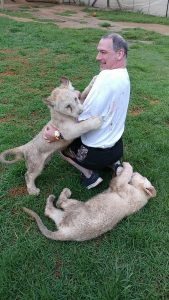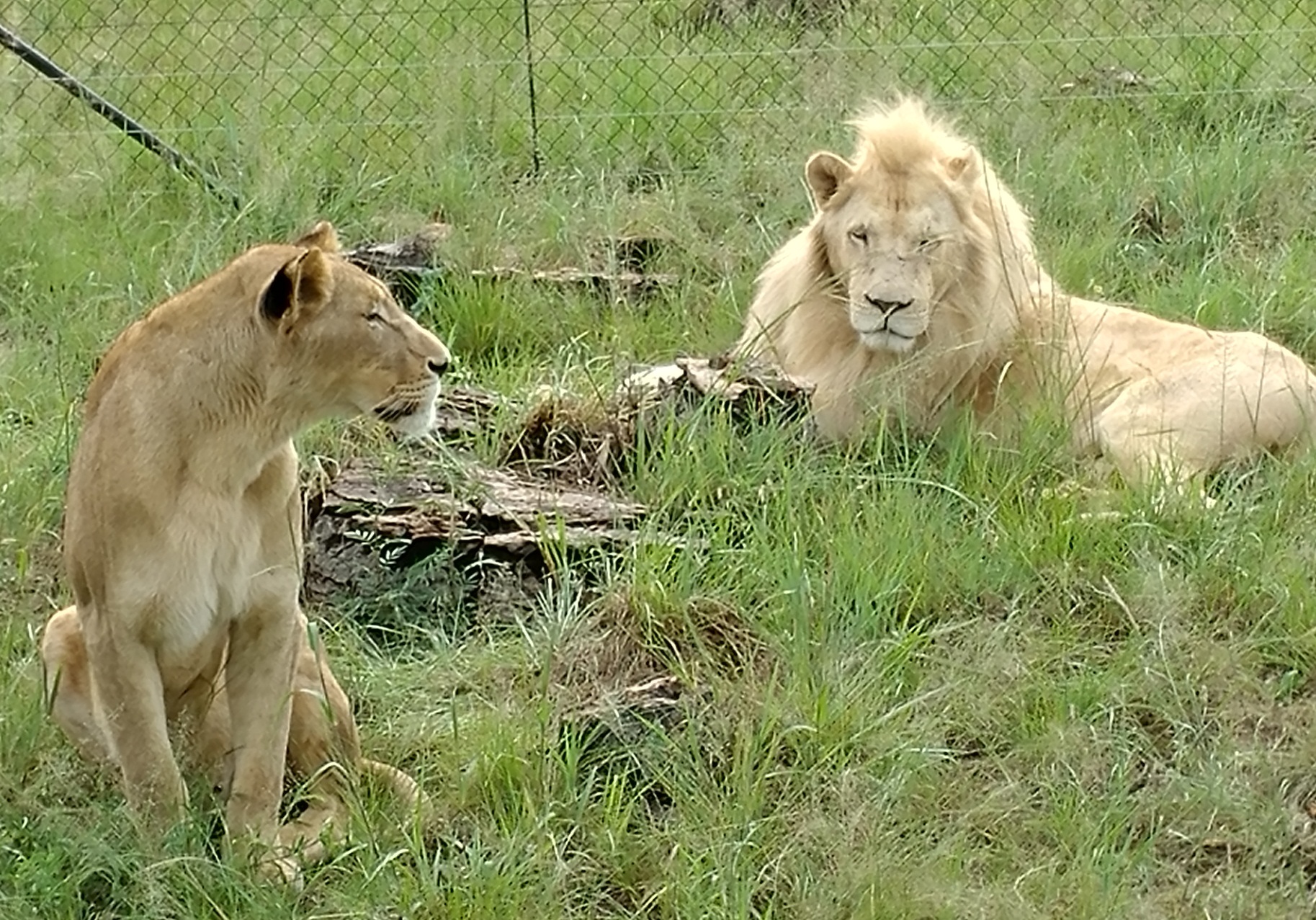At a constant 27 degrees Celsius, it was like a beautiful June day in Toronto. But it was March in Johannesburg, and I felt lucky to have dodged the 39cm of snow deluge that Hogtown had been plagued with, over the course of two weeks.
Allow yourself at least a week on the ground, for Johannesburg alone, as there’s so much to do. Naturally, you can DIY-it and bob from tour site to tour site. But I’d recommend hiring a guide, who’ll take you where you want to go, for how long you want to, at your convenience.
You can book affordable custom tours or follow any itinerary with Julio’s Tours and Safaris. Julio is quite the affable fellow, a great conversationalist, with a jovial sense of humour. Pepper him with questions about South Africa, as he’s a fount of information.
My first stop was the Lesedi Cultural Village. This is where I found out how many cows is the price for a Xhosa bride: Nine!

At the village, the visitor has the chance to meet, and learn about, people of various ethnicities: Zulu, Xhosa, Pedi, Ndebele and Basotho. Local tribespeople show their homestead – huts – while discussing their culture, folklore, rituals and history. The tour culminates in a series of dances that display their rich cultural heritage, as well as some mighty legwork.
Meals are extra, but for the adventurous, they offer crocodile, kudu (a kind of antelope indigenous to the region), warthog and dried worms.
Should you wish to stay overnight in the village, there’s a tribal hut waiting for you, and a wake-up call from the maskanda guitar.
At the Lion and Safari Park, take a guided drive (in an open, but protected truck), viewing up-close zebra, leopard, wildebeest, giraffe, wild dogs, cheetahs and lions. Only the brave will choose to buy the “wrestle with the lion cubs” premium, where three cute, but rambunctious kittens crawl, scratch, gnaw and jump on those daring to play. The memories last a lifetime; the backside scars, about three weeks.
Pilanesberg Game Reserve, about a three hour drive from Joburg, is where the Big Five reside: rhinos, elephant, lions, Cape buffalo and leopard. As well, there are exciting cameos from hyenas, zebras, monkeys, giraffes, wildebeests and the odd impala.

The sad and appalling history of the country’s racism and discrimination is chronicled at the Apartheid Museum. Opened in 2001, it features videos, photographs, and audios of this painful past, as well as tangible items like a police wagon and prison cells.
Next door, the Nelson Mandela exhibit takes the visitor through his life, work, and fight for freedom.
In a similar vein, Constitutional Hill is now where the Supreme Court is, and is adjacent to the prison where thousands of men and women were taken for little to no just cause. The visitor learns of the paltry food rations, the lack of hygiene, the crowded conditions and cruel punishments meted out during an era that is still fresh in the minds of most South Africans.
Craft Markets
Various crafts markets can keep you busy for hours; peruse handmade items, last-minute curios and sample African flavours.
At Maboneng in Johannesburg, row upon row of street merchants, as well as boutique shops, peddle locally-made wares. It is where I bought my wife a headscarf and a handmade bead necklace. Sit on a bench and have fresh made Ethiopian coffee. If timed right, you can catch a street performance of tribal dance.
The warehouse-filled Rosebank Flea Market and Rosebank Crafts Market is a one-stop shop for all souvenir needs. So whether you want tchotchkes, spices, or clothing; or local organic honey, cured meats, or treats – this is the place.
At roadside shops in Hartbeespoordam, I bought a leather belt made from kudu hide, and tasted marula fruit, plucked fresh from the tree. It’s reminiscent of sour plum and is fermented to make that famous cream liqueur, Amarula.
Do try biltong, a delicacy comprised of dried seasoned meat strips. It’s like beef jerky, only tougher, less sweet, and less processed. If you can’t sniff out exotic versions in the city, the airport has a large section of biltong made from kudu, impala, and springbok.
Where to stay:
In centrally-located Johannesburg, fantastic accommodations can be found at Genesis All Suite Hotel, which has won a slew of awards from TripAdvisor and Booking.com.
The cool factor is that it isn’t merely a hotel; rather, it is more like an apartment. It’s a real treat to have a fully-equipped kitchen, seating area, furnished living room area, on top of four-star rooms. It definitely has that spacious “home feel” to it. Their staff and support team, suffice it to say, are attentive and cheerful.
The hotel itself has two eating establishments: The Genesis Bistro, and the Fairmount Bar and Lounge, both upscale, with large enough menus to keep coming back for something new each time. Both are available through room service.
To unwind, take in their fitness centre or pool, or stroll around the hotel plaza, which has two supermarkets, a bagel restaurant, coffee shop, and about a dozen other shops.
North American consumers might also enjoy the fact that our currency is stronger (it’s 10 Rand to the $1CDN) and most food items there are about thirty to forty per cent cheaper.
Before you go:
– Learn some S.A. slang!
“Braai” is a barbeque (and if you ask them what barbeque means, they’ll tell you it’s a sauce), “lekker” means “delightful”, “howzit” means “how are you?”, “now” means “immediately”, “sarmie” means “sandwich”, “so long” means “meanwhile”, and “eish” is an expression of shock.
Flights from Toronto range about $900-$1,200. And though it could take up to 25 hours in the air to get to Joburg, it will be worth the trip.


